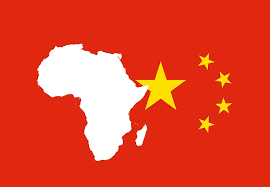
Fishing vessels under big brother’s eye
Major efforts have been made to prevent illegal fishing in the country over the years with the implementation of the Vehicle Monitoring System (VMS) as a monitoring, control and surveillance system to trace the activities of licensed fishing vessels in Namibia.
Recently, two hundred illegal foreign fishermen were also arrested in a seek and arrest operation, a joint operation by the police, the Ministry of Fisheries and Marine Resources and the two departments of immigration and customs.
According to the Deputy Director for the directorate of Maritime Affairs in the Ministry of Works and Transport, Patrick Silishebo, “Before a vessel is allowed to be on the sea waters the department of maritime affairs first conducts a full survey where we check everything on the vessel according to our check-list.”
Some of the things included in the check-list according to Silishebo include the vessel’s communication system, life serving equipment, fire system, first aid kit, anchor, transistor radio, life jackets for all crew members and the engine of a vessel and or propulsion system.
“Once we are satisfied, a vessel is given a safety certificate valid for 12 months.
After that, a vessel has to go through the dry dock where we check the underwater body of the vessel to determine the fitness of the vessel and to check if the thickness is still in good position as the vessel travels under water thus the sea water may eat the metal,” he said.
Dry docking is a term used for repairs or when a ship is taken to the service yard.
During dry docking, the whole ship is brought to a dry land so that the submerged portions of the hull can be cleaned or inspected.
When the vessel is now in the waters, Silishebo said his directorate conducts random inspections and flag state control inspection, in order to certify the ship’s equipment and crew and to make sure the vessel is operating according to their expectation.
“This is done because the vessel owners may go on to do what they want after being granted permission to operate in the sea waters.
Sometimes vessel owners borrow equipment from others just to go for inspection and meet the requirements in order to get a safety certificate and then they return the equipment and operate without enough equipment, which is very risky,” said Silishebo.
In order to deal with this problem, Silishebo said the Ministry of Works and Transport, through the department of Maritime Affairs, require every vessel’s equipment to be marked with its name.
The department of maritime is also responsible for the registration of a vessels so as to check the sea worthiness of the vessels upon which they will have conducted random surveys of the vessel as well.
“We have a check-list for the purpose of registration so as to ensure that a vessel registered is readily operational for it to be registered. The certificate of registry is only issued once,” concluded Silishebo.










































